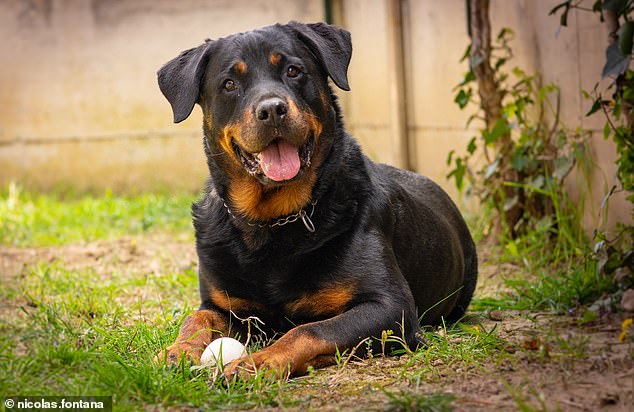In the animal kingdom, having a big brain is often related to being more intelligent.
But a new study by scientists in France shows that this is not really true when it comes to domestic dogs.
Researchers from the University of Montpellier analyzed the brains of more than 170 dog breeds.
They found that breeds with smaller brains respond better to training and have good short-term memory, two traits considered “intelligent” in dogs.
Meanwhile, breeds with larger brains scored higher on fear, aggression, attention-seeking behaviors and separation anxiety, traits linked to silliness.
So if you have a large dog like a Retriever, Rottweiler, or Siberian Husky, it likely has a smaller brain but greater intellectual capacity.
But if you have a smaller, “trendy” dog that you can fit in your bag, chances are he’ll have a bigger brain but lower intellectual capacity.
While the new findings may seem contradictory, scientists explain that excessive breeding by humans has distorted the natural layout of the canine brain.
If you have a large dog like a Retriever, Rottweiler (pictured), or Siberian Husky, they likely have a smaller brain but greater intellectual capacity.
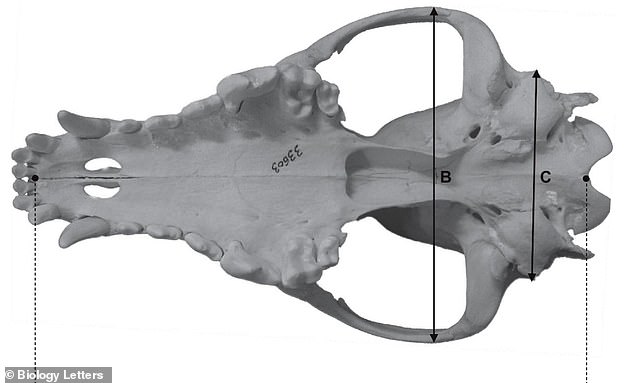
Generally in the animal kingdom, large brains are considered a sign of more advanced cognitive ability, but dogs seem to break this rule.
The new study was led by Ana Balcárcel, a biologist and paleontologist at the University of Montpellier, and published in biology letters.
“Dogs exhibit multiple personalities, functions, and cognitive abilities that may surpass those of non-human primates,” Balcárcel and his colleagues state in their article.
“Our results show that complex skills and cooperative behavior (a hallmark of social cognition) do not predict larger (brain) size in dogs.”
Often when canine experts talk about “large” and “small” brain sizes in dogs, they are referring to brain size in relation to overall body size.
As a result, a small breed like the Chihuahua will often have a “large” brain because it makes up a larger proportion of the total body size.
Meanwhile, a large breed, such as a Doberman or Great Dane, will have a “small” brain because it makes up a much smaller proportion of the total body size.
Using this rule, the researchers measured the skulls of 1,682 adult dog skulls, 172 different breeds in total.
They collected data on “relative endocranial volume” (REV), which is simply the size of the brain relative to overall body size.
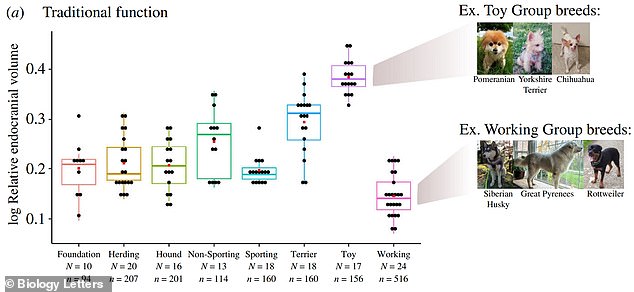
Toy dogs have larger brains (relative to body size), while working dogs have smaller brains relative to body size.
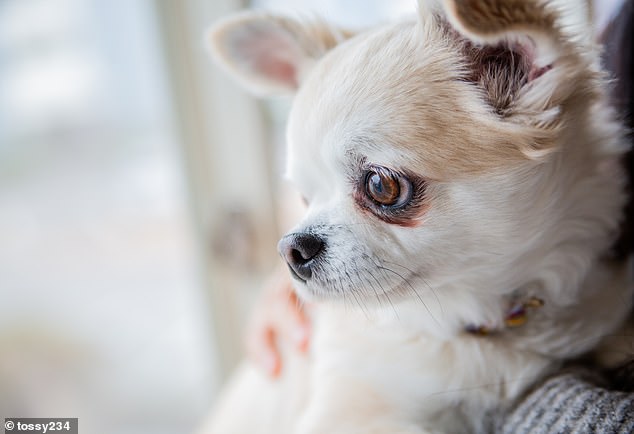
Smaller “toy” breeds, such as Pomeranians and Chihuahuas (pictured), had the largest relative brain size, according to the team. This is related to sillier traits, namely fear, aggression, attention seeking, and separation anxiety.
The researchers found that the largest “working” breeds, such as retrievers, Rottweilers, and huskies, had the smallest relative brain size (a smaller REV).
This is related to “complex human assistance skills” and “higher cognitive abilities”, including “trainability”.
Meanwhile, smaller “toy” breeds, such as Pomeranians and Chihuahuas, had the largest relative brain size, according to the team.
This is related to sillier traits, namely fear, aggression, attention seeking, and separation anxiety.
The researchers explain: “REV increases with fear and aggression, attention seeking, and separation anxiety, and decreases with trainability.”
According to the researchers, the brains of larger “working” dogs may have reorganized into a more compact space, leading to their improved cognition.
Generally in the animal kingdom, large brains are considered a sign of more advanced cognitive ability.
However, the findings show that dogs seem to break this rule.
The researchers say: “This hypothesis is contradicted by domesticated populations, which despite having smaller brains compared to their wild counterparts can demonstrate enhanced cognitive abilities.”
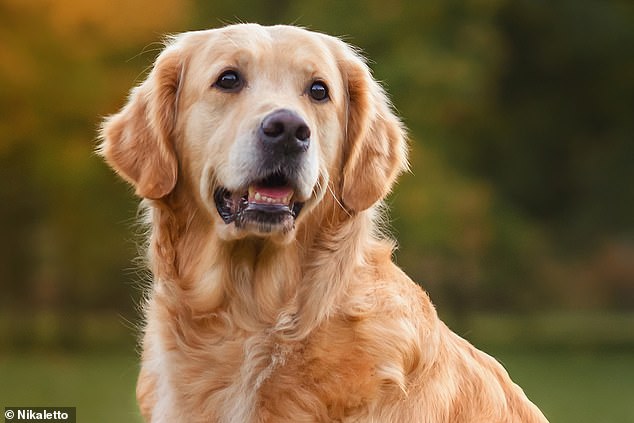
The largest “working” breeds, such as retrievers (pictured), had the smallest relative brain size, making them one of the most intelligent dog breeds.
Dogs are an outlier in this regard, probably because they have been intensively bred by humans for centuries, dramatically distorting their physical attributes.
The concept of “race” is not natural; rather, it was created by humans when we began intensively breeding canines around the end of the 19th century.
Since then, dogs have been selectively bred to accentuate harmful characteristics and create so-called breeds to distinguish them from each other and feed the dog buying industry.
In general, domestic dogs have brain sizes that are, on average, 20 percent smaller than those of their closest living wild relative, the gray wolf (Canis lupus).
Whether searching for food, avoiding predators, or finding a mate, domestic dogs have to deal with fewer cognitive demands compared to wild dogs.
Because of this reduction in need for brain capacity, the brains of domestic dogs have been gradually shrinking, the theory goes.
Researchers admit that personalities, skills and cognitive abilities can “vary within races and between individuals.”

